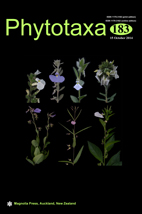Abstract
Three coelomycete species with muriform conidia were collected in Italy and subjected to morpho-molecular analyses. In morphology, all species are similar to Camarosporium sensu stricto. Based on morphology, one was identified as C. spartii and the other two taxa are introduced as new species, viz. C. clematidis and C. robiniicola. Maximum likelihood, maximum parsimony and Bayesian analyses of the combined LSU, SSU and ITS dataset show that the three taxa cluster with C. quaternatum, the type species of Camarosporium, with high bootstrap and PP values. All four species can be considered as Camarosporium sensu stricto. Cucurbitaria elongata groups in the Camarosporium clade near to Camarosporium robiniicola and is considered that it is not congeneric with Cucurbitaria sensu stricto (Cucurbitariaceae).

